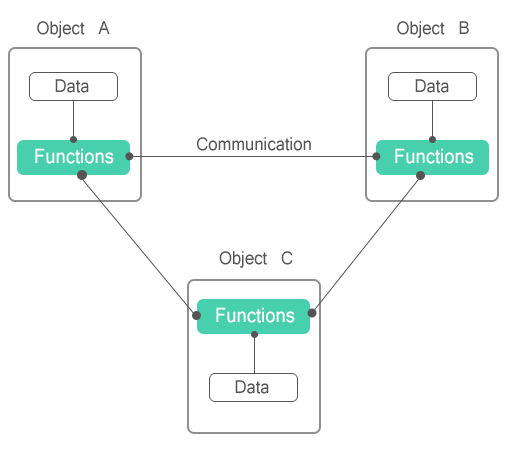CPP
-
Home
-
CPP
-
Object-Oriented Programming Paradigm
Object-Oriented Programming Paradigm
- The major motivating factor in the invention of object-oriented approch is to remove some of the flaws encountered in the procedural approch.
- OOP treats data as a critical element in the program development and does not allow it to flow freely around the systems.
- It ties data more closely to the functions that operate on it, and protects it from accidental modification from outside functions.
- OOP allows decomposition of a problem into a number of entities called objects and then builds data and functions around these objects.
- The data of an object can be accessed only by the function associated with that object.
- However, functions of one object can access the the functions of other objects.

Some of the striking features of object-oriented programming are
- Emphasis is on data rather than procedure.
- Programs are divided into what are known as objects.
- Data structures are designed such that they characterize the objects.
- Data is hidden and cannot be accessed by external functions.
- Objects may communicate with each other through functions.
- New data and functions can be easily added whenever necessary.
- Follows bottom-up approch in program design.

Ask Question